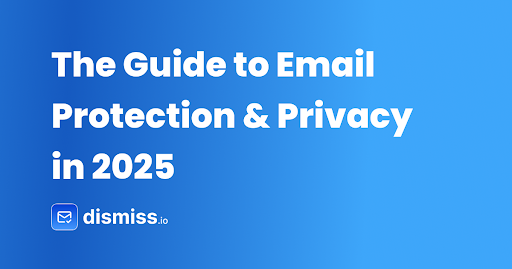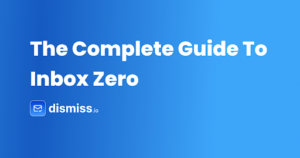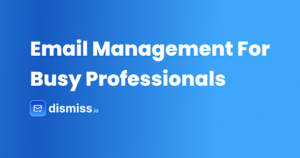Recent data from Google’s Cybersecurity Report shows that most email security breaches aren’t the result of sophisticated attacks, but rather come from basic security oversights. This guide focuses on practical measures every email user can implement to protect their communications and personal information.
Essential Email Security Measures
Password Security
Your email password is the primary defense against unauthorized access. Current security standards recommend:
- Using unique passwords for email accounts
- Implementing passwords with at least 12 characters
- Avoiding personal information in passwords
The National Institute of Standards and Technology now recommends focusing on password length rather than complexity. A longer password like “correcthorsebatterystaple” is more secure and easier to remember than a shorter, complex one like “P@ssw0rd!”.
Two-Factor Authentication (2FA)
Two-factor authentication is no longer optional. When enabled, even if someone obtains your password, they cannot access your account without the second verification method. According to Microsoft’s Security Research, 2FA blocks 99.9% of automated attacks.
Enable 2FA through:
- Authentication apps like Google Authenticator or Authy
- SMS verification (though less secure than authenticator apps)
- Hardware security keys for maximum protection
Email Privacy Settings
Modern email services offer built-in privacy features that are often overlooked. Essential settings to review:
Gmail Users
- Access your Google Security Checkup
- Review third-party app access
- Check recent security events
- Configure recovery information
Outlook Users
- Visit Outlook’s Security Settings
- Review connected devices
- Set up email encryption
- Manage trusted senders
Practical Daily Security Habits
Before Opening Emails
- Verify the sender’s address completely
- Don’t trust display names alone
- Question unexpected emails, even from known contacts
When Handling Attachments
According to Verizon’s 2024 Data Breach Report, malicious attachments remain a primary attack vector. Before downloading:
- Confirm you were expecting the attachment
- Verify the file type (be especially cautious of .exe, .zip, or .doc files)
- Use built-in preview features when available
Managing Personal Information
Your email contains significant personal data. Protect it by:
- Regularly reviewing connected services through your email provider’s security dashboard
- Removing access from unused apps and services
- Using email aliases for online services (available through SimpleLogin or similar services)
Managing Email Overload
The Hidden Cost of Unwanted Emails
Recent studies show that the average professional spends 28% of their workday managing emails, with McKinsey reporting that email management consumes nearly 2.6 hours daily. Unwanted emails contribute significantly to this time sink, affecting both productivity and mental well-being.
Digital Decluttering Strategies
- Regular Inbox Audits
- Review subscription patterns
- Identify recurring unwanted senders
- Document important vs. unnecessary communications
- Email Organization
- Implement folder structures
- Use Gmail’s labels effectively
- Archive instead of delete for future reference
Understanding Email Marketing and Privacy
Legitimate vs. Unwanted Communications
Not all marketing emails are spam. Understanding the difference helps maintain a balanced inbox:
- Legitimate marketing emails include unsubscribe options
- They comply with privacy regulations like GDPR and CAN-SPAM
- Senders have transparent business identities
Your Rights as an Email User
Under various privacy regulations, you have the right to:
- Opt out of marketing communications
- Request your personal data
- Report violations to relevant authorities
When to Be Extra Cautious
Certain situations require heightened attention:
- Financial Transactions
- Never send banking details via email
- Use official websites for financial operations
- Verify requests for payment by contacting the sender through a different channel
- Public Wi-Fi Usage
- Use a reputable VPN service
- Avoid accessing sensitive accounts
- Ensure your email client shows a secure connection (look for HTTPS)
Recovery Planning
Take these preventive steps now:
- Set up account recovery options
- Save backup codes for 2FA
- Document your connected services
The FTC’s Identity Theft Resource Center provides comprehensive guidance if your email is compromised.
Staying Updated
Email security evolves constantly. Stay informed through:
- Your email provider’s security blog
- CISA’s Security Tips
- Official communications from your email service
Streamlining Your Inbox with Dismiss
Professional Email Management
Dismiss offers a sophisticated solution for managing unwanted emails in Gmail, combining privacy protection with efficient inbox management.
Security and Trust
Dismiss stands out through its robust security credentials:
- CASA Tier 2 certification from Google
- Third-party security auditing
- Strict privacy standards compliance
Key Features and Benefits
- Automated Unwanted Email Detection
- Smart filtering of unsolicited communications
- Pattern recognition for recurring unwanted senders
- Time-Saving Automation
- Reduces email management time
- Streamlines unsubscribe processes
- Maintains inbox organization automatically
Getting Started
Try Dismiss risk-free:
- Visit dismiss.io
- Sign up for the free trial
- Connect your Gmail account
- Experience a cleaner, more manageable inbox free from annoying sales email
Conclusion
Email security doesn’t require technical expertise, but it does demand attention and consistent good habits. By implementing these measures and utilizing tools like Dismiss, you significantly reduce your risk of email-based security incidents while maintaining a clean, efficient inbox.
For additional guidance, consult:
- NIST’s Cybersecurity Framework
- Your email provider’s help center
- Have I Been Pwned to check if your email has been compromised
Remember that email security is an ongoing process, not a one-time setup. Regular reviews of your security measures and inbox management practices will help ensure continued protection of your digital communications.



